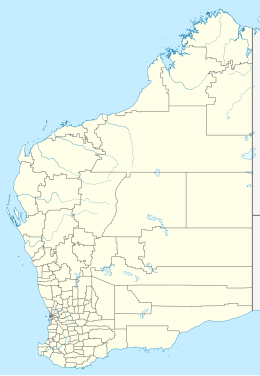|
Depuch Island
Depuch Island (or Warmalana) is a volcanic island located off the north-west coast of Western Australia's Pilbara region, near Port Hedland. Aboriginal significanceThe island is of cultural importance to the Ngaluma Aboriginal people, who know it as Warmalana.[1] According to Ngaluma legend, the island was formed during the Dreaming when Matalga, a leading Pilbara spirit man, lifted a large rock and threw it into the sea. The rocks and boulders of the island are covered with Aboriginal engravings and rock art.[2] European explorationThe island was charted in July 1801 by François-Michel Ronsard, the cartographer on a French expedition led by explorer Nicolas Baudin on board the ship Le Géographe. The island was named Ile Depuch after Louis Depuch, a mineralogist on Baudin's expedition. After a visit to the island, Ronsard established that it was volcanic, and was the first evidence of volcanic activity on the Australian continent the expedition had discovered.[3] In 1912, a Norwegian steel sailing ship, the Crown of England, was shipwrecked as it lay anchored on the island loading copper ore, after the area was struck by a cyclone. Many other ships were sunk in the area, such as the passenger liner SS Koombana.[4] The newly built tug SS Wyola sailing for Fremantle was despatched to rescue the barque Concordia which was left grounded by the storm.[5] Recent activityThe discovery of iron ore deposits in the Pilbara region during the early 1960s saw Depuch Island considered for use as a port for the mining facilities being established in the area. In 1962, however, a survey by the Western Australian Museum discovered thousands of Aboriginal engravings, and the port was moved to the Dampier Archipelago.[6] References
|
||||||||||||||||
